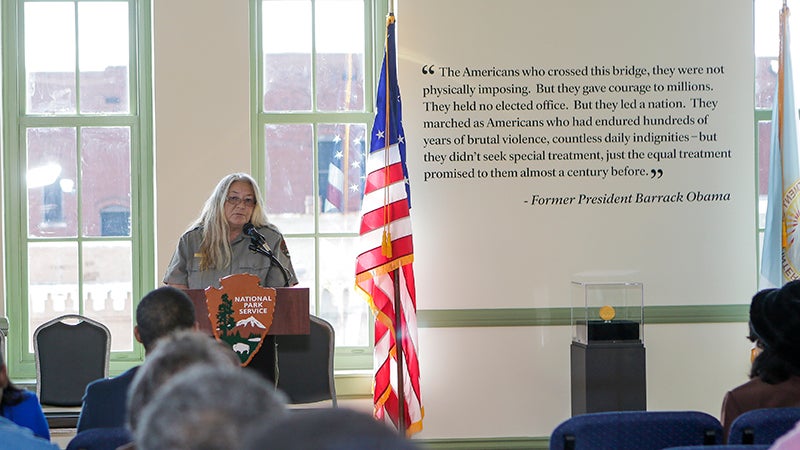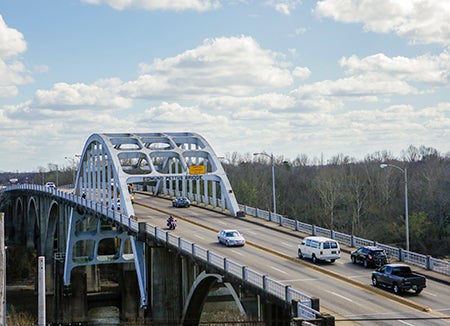Selma Interpretive Center expansion complete
Published 10:34 pm Thursday, February 23, 2017

- Theresa Hall, park ranger with the National Park Service, speaks at a ceremony Thursday to celebrate the expansion of the Selma Interpretive Center.
The Selma Interpretive Center is moving on up — literally — after the completion of its second and third stories.
“I am just thrilled. The expansion of the Selma Interpretive Center is a shared victory and a shared celebration,” said U.S. Congresswoman Terri Sewell, a native of Selma. “We wouldn’t be here without the foot soldiers, without the city of Selma, without the National Park Service and without the stake holders.”
The first floor of the center opened in 2011, and the National Park Service has been working to complete the second and third floors since mid 2016.
The second and third floors of the center were unveiled Thursday with a ceremony that honored the foot soldiers from the 1965 march.
“It means an awful lot to see that the work we did turned out to be prosperous,” said Freddie Mitchell, a foot soldier that was 13 at the time of the march. “In the beginning, we were scorned for doing what we were doing, but, in the end, it turned out to be very prosperous for the whole world.”
Mitchell said he enjoyed walking around the exhibit and seeing some of the artifacts that had been added.
“I think it’s very nice,” Mitchell said of how the center looked. “I love it.”
Theresa Hall, park ranger with the National Park Service and who is over the Selma Interpretive Center, said she was excited to see the completion of the center and have everyone out there to celebrate.
“It means a lot to me today because we’re able to honor the people that made this movement happen,” Hall said. “This is all about the foot soldiers, making sure we tell their story and making sure it’s not forgotten.”

The Edmund Pettus Bridge is shown from the third floor of the recently expanded Selma Interpretive Center.
Hall said some of the artifacts featured are a coat that was worn on Bloody Sunday, a deputy’s badge that Sheriff Jim Clark gave his deputies during the movement and the Congressional Medal that was awarded to the foot soldiers in 2015.
“From what we started with, it’s just incredible. It’s beautiful,” Hall said. “We’re able to reach more people on all different levels.”
Hall said with the second and third floors, they hope to tell some stories from the voting rights movement that are not told that often, like the teachers march in Selma.
“At the end of the day, the story of Selma, the story of the voting rights movement, is worthy of a state of the art Selma Interpretive Center,” Sewell said. “So I will continue to strive to make this center the spot to come to, to learn about voting rights in America.”





